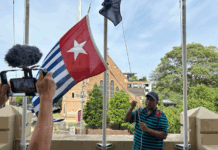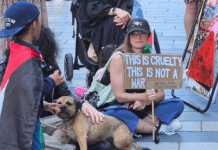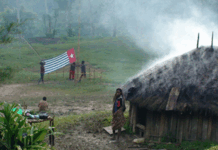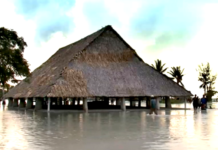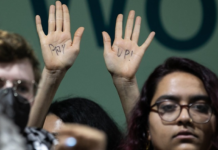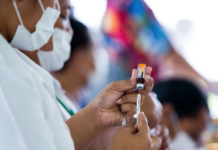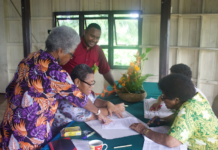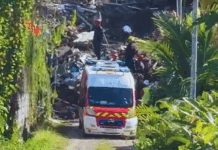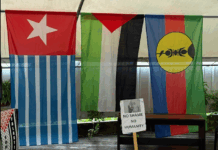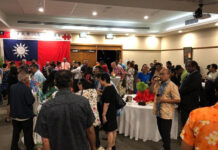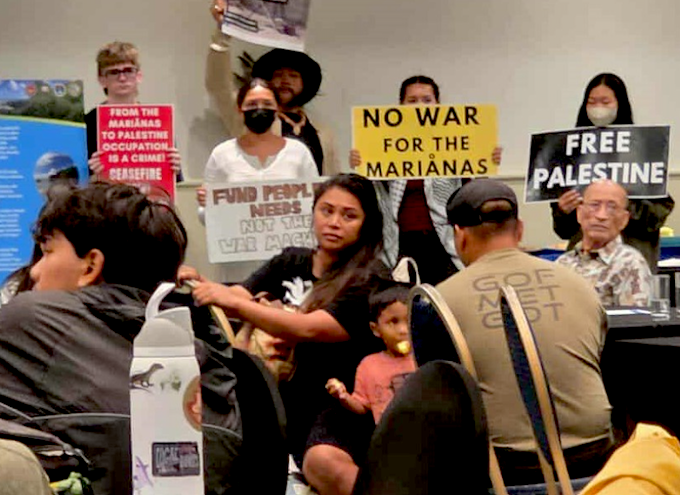
By Bryan Manabat in Saipan
Advocacy groups in the Commonwealth of the Northern Mariana Islands (CNMI) disrupted the US Department of Defense’s public meeting this week, which tackled proposed military training plans on Tinian, voicing strong opposition to further militarisation in the Marianas.
Members of the Marianas for Palestine, Prutehi Guahan and Commonwealth670 burst into the public hearing at the Crowne Plaza hotel in Garapan, chanting, “No build-up! No war!” and “Free, free, Palestine!”
As the chanting echoed throughout the venue on Wednesday, the DOD continued the proceedings to gather public input on its CNMI Joint Military Training proposal.
The US plan includes live-fire ranges, a base camp, communications infrastructure, and a biosecurity facility. Officials said feedback from Tinian, Saipan and Rota communities would help shape the final environmental impact statement.
Salam Castro Younis, of Chamorro-Palestinian descent, linked the military expansion to global conflicts in Gaza and Iran.
“More militarisation isn’t the answer,” Younis said. “We don’t need to lose more land. Diplomacy and peace are the way forward – not more bombs.”
Saipan-born Chamorro activist Anufat Pangelinan echoed Younis’s sentiment, citing research connecting climate change and environmental degradation to global militarisation.
‘No part of a war’
“We don’t want to be part of a war we don’t support,” he said. “The Marianas shouldn’t be a tip of the spear – we should be a bridge for peace.”
The groups argue that CJMT could make Tinian a target, increasing regional hostility.
“We want to sustain ourselves without the looming threat of war,” Pangelinan added.
In response to public concerns from the 2015 draft EIS, the DOD scaled back its plans, reducing live-fire ranges from 14 to 2 and eliminating artillery, rocket and mortar exercises.
Mark Hashimoto, executive director of the US Marine Corps Forces Pacific, emphasised the importance of community input.
“The proposal includes live-fire ranges, a base camp, communications infrastructure and a biosecurity facility,” he said.
Hashimoto noted that military lease lands on Tinian could support quarterly exercises involving up to 1000 personnel.
Economic impact concerns
Tinian residents expressed concerns about economic impacts, job opportunities, noise, environmental effects and further strain on local infrastructure.
The DOD is expected to issue a Record of Decision by spring 2026, balancing public feedback with national security and environmental considerations.
In a joint statement earlier this week, the activist groups said the people of Guam and the CNMI were “burdened by processes not meant to serve their home’s interests”.
The groups were referring to public input requirements for military plans involving the use of Guam and CNMI lands and waters for war training and testing.
“As colonies of the United States, the Mariana Islands continue to be forced into conflicts not of our people’s making,” the statement read.
“ After decades of displacement and political disenfranchisement, our communities are now in subservient positions that force an obligation to extend our lands, airspace, and waters for use in America’s never-ending cycle of war.”
They also lamented the “intense environmental degradation” and “growing housing and food insecurity” resulting from military expansion.
“Like other Pacific Islanders, we are also overrepresented disproportionately in the military and in combat,” they said.
“Meanwhile, prices on imported food, fuel, and essential goods will continue to rise with inflation and war.”
Republished from Pacific Island Times.



